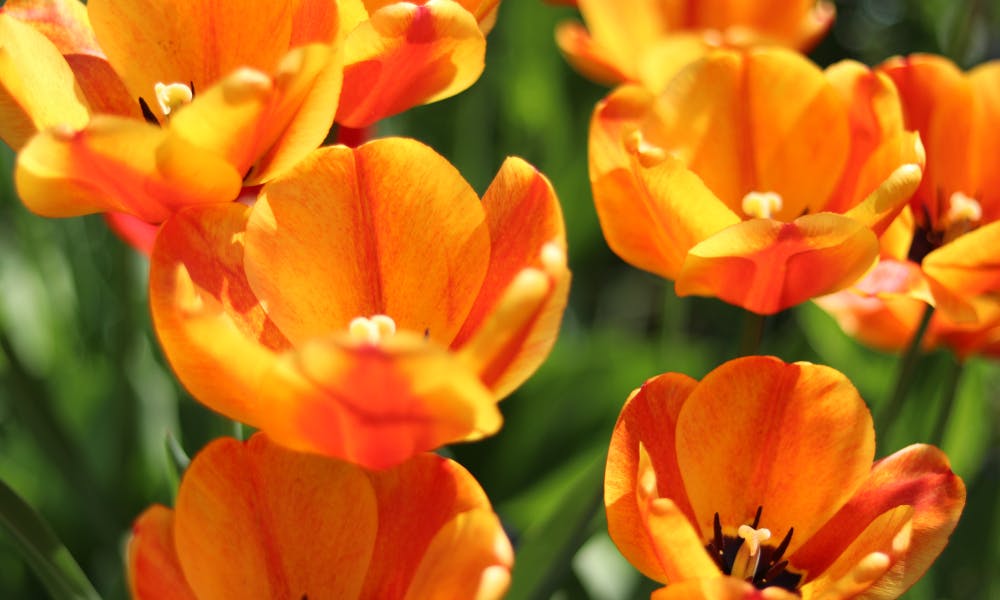Blossoms began to appear about 130 million years ago but started to explode significantly about 100 million years ago. Increasing in terms of varieties and species, flowers developed with the help of insects. Currently, there are 250,000 species of blooming plants, while only 700 species of plants are without flowers, and around 20,000 species of ferns have been listed: it is evident that flowers, therefore, not only dominate the plant world, but the human world as well.
For many years, humans have used flowers to send messages and express feelings.
Leaders from ancient times onwards have used flowers and their design as symbols of successful societies. It is almost fair to assume that flowers were an earlier form of publicity. Although modern advertising is not absent in modern America, flowers are still employed for their unrivaled communication skills, with each state claiming its state flower with pride.
In this article, we are going to discuss several points, such as:
* What Is the Most Famous Flower out of Every 50 State Flower?
* What Is the Official Flower of the State of Hawaii?
* Why Is the Alpine Myosotis the Official Bloom of Alaska?
* Examples of the 50 State Flowers
What Is the Most Famous Flower out of Every 50 State Flower?
The peony, the official flower of the state of Indiana, is one of the most popular blooms of modern times, cherished for its bright colors, pleasant fragrance, and abundant, luscious petals. As peonies have grown to become a firm favorite of flower shops, bridal planners, and home-design bloggers, for thousands of years, they have also been beautifully adorned blossoms.
Their popularity dates back so far that there are many legends as to how these stunning beauties originally appeared on Earth. Numerous myths claim that peonies are named for Paeon, the Greek doctor to the gods.
The peony (Paeonia) was approved as a state flower by the 1957 General Assembly. Before that, between 1931 and 1957, the zinnia was the state flower. The General Assembly did not designated any specific color or type of variety. It is grown extensively throughout the state and is highly prized for grave decorations on a memorial day.
What Is the Official Flower of the State of Hawaii?
The hibiscus is the blossom of love. In Tahiti, this symbol is carried by young females on the right ear to send a message that her heart is to be taken, and on the left ear, if it is already taken.
In the vocabulary of blossoms, the hibiscus is primarily an indication of intense sexual desire. The hibiscus expresses a short but passionate love. Its flowers may be white, yellow, rose, orange, and red. Each hibiscus color has different meanings in the floral language.
The state flower of Hawaii is the yellow hibiscus, a bright bloom with wide blossoms. You are probably wondering why it is not the famous red hibiscus…maybe because it looks more like the bright sun of Hawaii? The yellow hibiscus grows in the highest elevation of all Hawaiian hibiscus, at 400-2,600 feet above sea level.
Hibiscus is not valued only for aesthetics, but also for its medicinal effects and flavor. They add taste and color to numerous teas and desserts, especially in Hawaii.
Why Is the Alpine Myosotis the Official Bloom of Alaska?
Alaska first adopted the indigenous wild Alpine myosotis as a state flower in 1917. Myosotis belongs to a rare family of flowers with a pure blue bloom. There are light and dark colored blooms that come from this flower.
Both light and dark purple colors are highly related to memory and meaning, but a white myosotis is a symbol of charity directed towards the less privileged. The pink species are mostly given between spouses or lovers.
The alpine myosotis is the symbol of World Missing Children’s Day, May 25, declared in 1983 by President Reagan. Since 2002, Child Focus, a Belgian non-profit organization for missing and sexually exploited children, acts as a relay, and every year the people in this group organize this day.
The myosotis flower has many meanings, such as pure and lasting love, a strong bond, loyalty despite separation, and all the challenges.
Examples of the 50 State Flowers
Alabama (Camellia): The flower of the state was switched from the solidago to camellia on August 26, 1959. Butler County ladies favored the camellia because the solidago is a wildflower.
California (California Poppy): The California poppy officially became the flower of the state on March 2, 1903. Its bright orange blossoms are a symbol of the Golden State, possibly considered a floral display of the “golden fields” that were prized during the gold rush.
Delaware (Peach Blossom): Passed on May 9, 1895, following a request by some farmers and students to the General Assembly. Delaware became one of the major producers of peaches in the early 1800s until a curse called “the yolks” ruined the fruit orchards.
Georgia (Rose Cherokee): The Cherokee rose, which is native to the soil of the northern region of Georgia, is found among the aborigines and thrives with the equally rich vegetation in all the districts of the state.
The rose flower (Rosa spp.) is not the first suggested plant as a floral symbol for the United States. U.S. Senator Everett Dirksen of Illinois presented a motion on two occasions: in 1965 and 1967 – to approve the Indian rose (Tagetes erecta) as America’s national flower. However, he did not succeed, maybe because it smells so bad, and no one wants a floral emblem that stinks.
The true rose has had better luck and was definitely more fragrant! On November 20, 1986, President Ronald Reagan declared the rose to be the official U.S. national floral symbol.
Despite having the rose as the official flower of the United States of America, each of the 50 states has its own official bloom. They all have different meanings, fragrances, colors, etc. And that is part of the diversity of this country.
